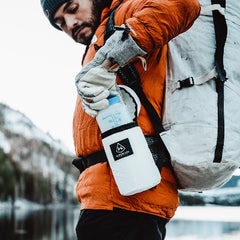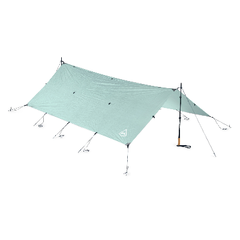For this series of posts on ultralight nutrition, we tapped Boulder, CO-based sports nutritionist Brian Rigby. Brian holds a Master of Science in Applied Clinical Nutrition and is a Certified Sports Nutritionist through the ISSN (International Society for Sports Nutrition). As the owner of Boulder’s Elite Sports Nutrition, he consults athletes of all stripes on how to get the most out of their bodies and achieve better performance. We thought we’d see what he might have to say about our own endeavors in the vein of extreme exertion. Look for more posts to follow, specifically on carbohydrates, fat and how to balance all three building blocks.
Protein is not always considered important by hikers and backpackers. It doesn’t provide energy—at least not in the same way as fats and carbohydrates—and it has a reputation as a mass-building nutrient, giving some the idea that they’ll end up gaining unwanted muscle they’ll have to carry around. As a result, when most people build their ultralight backpacking meals, protein needs tend to lose focus while carbs and fat take center stage.
Protein isn’t just for bodybuilders, though; it’s an essential nutrient for all forms of exercise, regardless of physique goals. Protein helps you get more out of physical preparation you do pre-trip and stay strong while you’re out on the trail.
Simply put: without adequate protein, you’re limiting your potential. Let’s talk about why.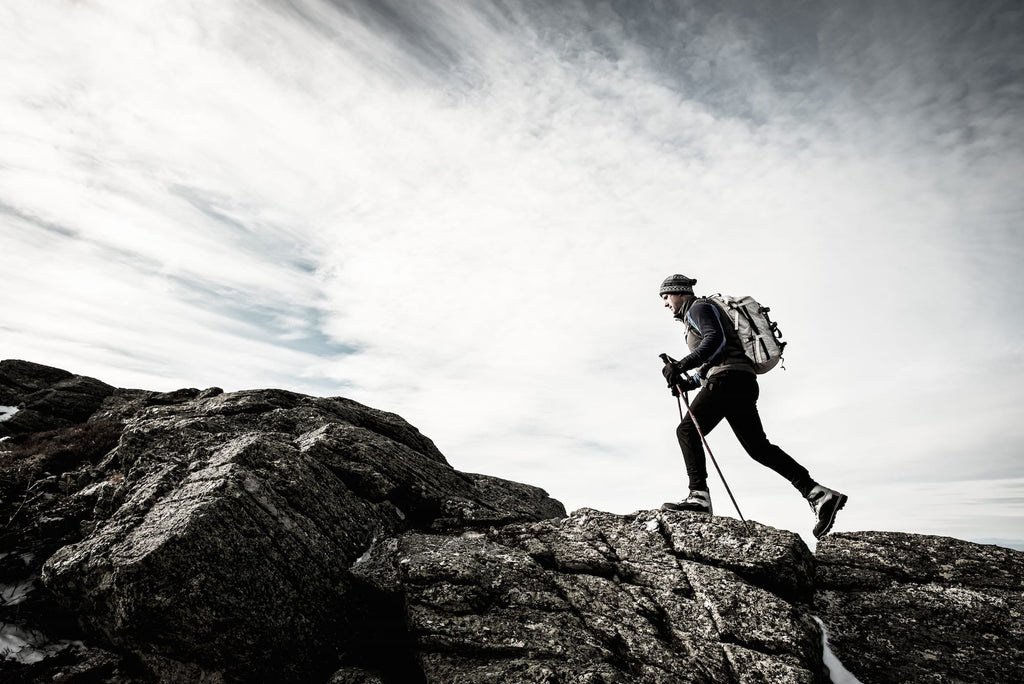
Pre-trip Nutrition to Ultralight Backpacking Meals in the Field
All exercise—including hiking and backpacking—relies on muscle. Getting better at a given activity means training the relevant muscles to work better, whether that means with more force, more power, more efficiency, or (most often) a combination of all the above. Protein is the nutritional link to getting results from that training.
There is a misconception that protein, in and of itself, builds muscle. Unfortunately for all the would-be swole bros out there, it’s not protein that builds muscle, it’s training and preparation. Protein just allows those who do the training to maximize their results.
The best way to look at protein isn’t as an aid for muscle growth, but as an aid for muscle adaptation. If you’re training like a bodybuilder, you’re telling the muscles to adapt like a bodybuilder’s—e.g., to maximize hypertrophy. If you’re building a base for an expedition or thru hike, on the other hand, you’re not going to end up Arnolded out, you’re going to start your trip as a stronger hiker.
Protein will cause some muscular growth as a single type of adaptation, but only in the muscles that are carrying you and your pack around, and only to the extent you use them. Protein will also encourage new red blood cell formation (to combat against hemolysis, or the breakdown of red blood cells common in athletes who put their feet through the paces), new mitochondria formation (to improve energy metabolism), and new immune cells (to ward against upper respiratory infections, a common ailment linked to aerobic exercise).
Regardless of whether or not you consider yourself an athlete, you need an athlete’s dose of protein. It’s not that you won’t adapt without it, you just won’t adapt as well or as fast. You’re limiting your potential for improvement (within a given period of time). If you’re going to put the time into adequately preparing in the first place, you might as well get everything you can from it!
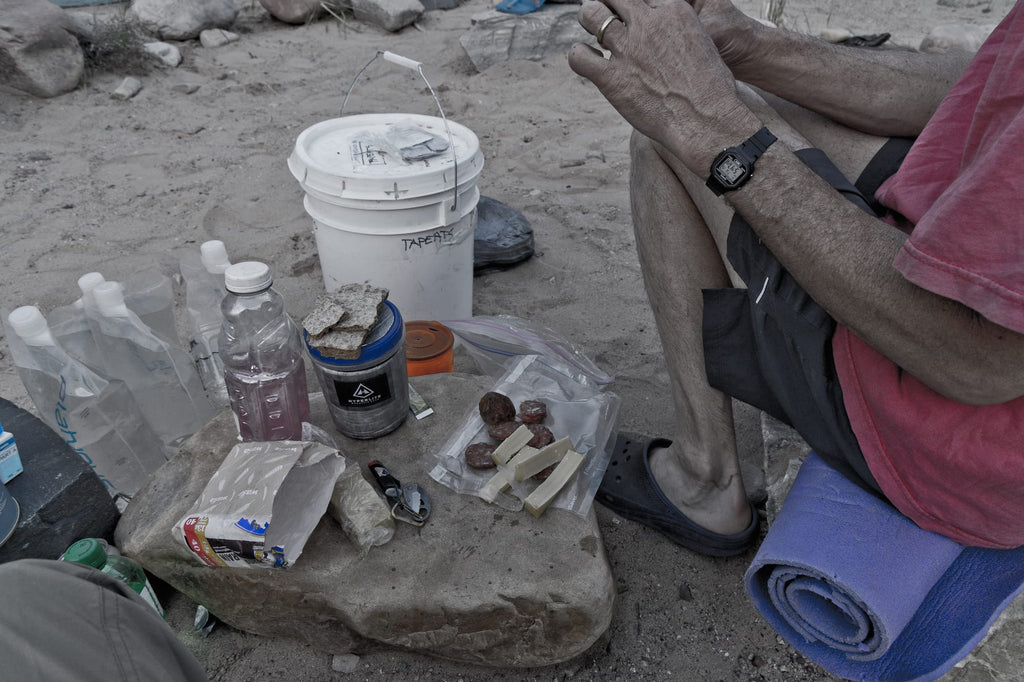
Protein Helps You Go the Distance
Protein-rich ultralight backpacking meals only get more important once you’re actually on the trail. In addition to keeping your muscles and other cells in good shape, protein also helps prevent muscle breakdown—which always happens during long duration exercise—and stymies fatigue.
Muscle isn’t a single-function organ. Yes, a muscle’s most important function is to enable movement, but it’s also a storage organ for amino acids, which can be converted into glucose in a pinch. This is important because our brain runs primarily off glucose, and it’s greedy. Not only does it consume more glucose (per ounce) than any other organ, but when glucose supplies start to dwindle (e.g., when we exercise) it starts to horde the remaining glucose for itself and tells the body to start making new glucose using our muscles as the fuel source. To a degree, this is inevitable, and not necessarily a problem.
When muscle breakdown occurs consistently throughout the day though, and each day is followed by a new day where it continues to happen, the body starts wearing down (sound familiar?). Dietary protein ameliorates this.
Your ultralight backpacking meals need to replenish amino acids—not only to repair the broken-down muscle tissue, but also for the brain to convert in the first place (carbs also help by preempting the need for gluconeogenesis, or new glucose creation). The body runs on signals, so if it detects high levels of amino acids in the blood, it gets the signal not to use muscle tissue and just use what’s available.
Protein also plays a role in preventing central fatigue, or brain fatigue. An interesting thing happens when our body starts turning amino acids into glucose: since our body can only use specific types of amino acids as the base for glucose, other amino acids—like tryptophan—become more dominant. As tryptophan gains dominance, it starts crossing the blood-brain barrier to a greater extent and forcing the brain to produce more tryptophan, which sends the signal to our body that it’s getting tired.
It’s important to note that this sort of fatigue is separate from muscular fatigue. Our brain and muscles give each other a ton of feedback, but in this case our brain is overriding what our muscles are saying. It tells our body that it’s so tired it doesn’t really care if the legs are willing to go on. Obviously, this isn’t ideal.
Thankfully, here again protein can help. While there’s a school of thought that advocates for intervention, specifically supplements containing individual amino acids like the BCAAs (branched chain amino acids), the actual results are poor-to-mixed.
Instead, keeping it simple with whole, high-quality protein produces results that are not doubted: during any exercise lasting longer than three hours, consuming protein along with carbohydrates and fat decreases fatigue and increases time-to-exhaustion.
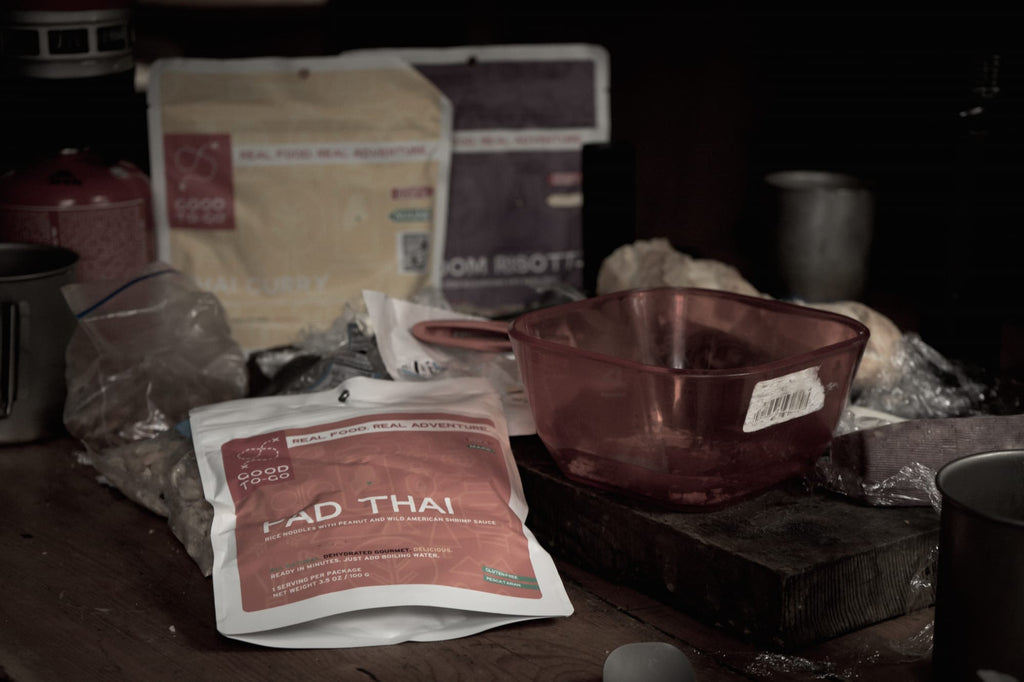
How Much Protein Is Enough?
How much protein is “enough protein” is a sticky question, and one to which you’ve probably heard numerous contradictory answers. Some advocate a minimalist approach and go with the Recommended Daily Allowance (RDA), which is only 0.8 grams per kilogram of bodyweight (or 0.36 grams per pound). Others go the opposite route and recommend 2+ grams per kilogram (or about 0.9 grams per pound). Many nutritionists provide mostly reasonable recommendations in line of 1.2-1.6 grams per kilogram, but even this I think can be improved upon, so my recommendation is this:
Eat 20-25 grams of protein per meal, and have five or six meals per day spaced out by three hours. Total protein intake should be 100-120 grams
My rationale is as follows:
1. Studies have routinely shown that the body gets near-maximum benefit from 20 grams of protein. When greater amounts of protein are consumed, the remainder is mostly burned for energy or excreted, not used for structural needs.
2. It appears that it takes the muscles around three hours to “cool down” from a protein feeding. The science is still in the works on this one, but it’s doubtful that the ultimate recommendation will wander far from this mark. Plus, three hours is a reasonable amount of time to space a meal.
3. Assuming you sleep an average of eight hours, you have sixteen other hours during which to eat. If you perfectly spaced your meals, you could eat six times. Most of us will fall short of this, but five meals is easily achievable and will provide nearly the same benefit.
If you do the calculations, you’ll find that the “mostly reasonable” weight-based recommendations all wind up somewhere in the vicinity of 90-140 grams of protein per day unless you are either much lighter or heavier than the average person. Thus, I often call these figures “accidentally correct,” because they are good recommendations, they’re just more complicated than they need to be.
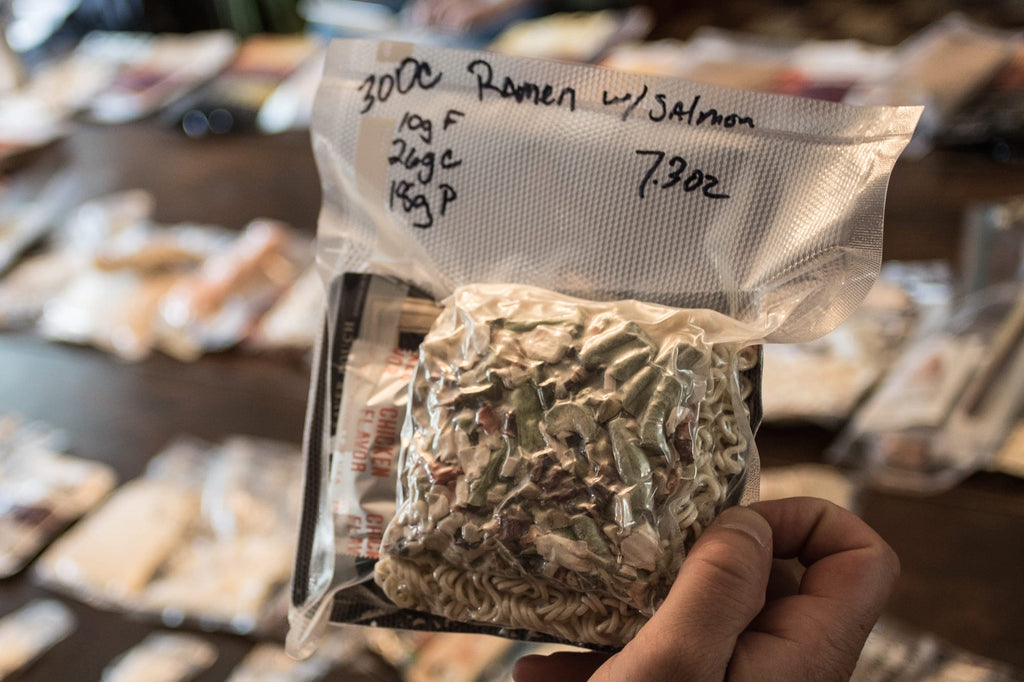
Actual Protein Recommendation for Ultralight Backcountry Meals
Ideally, you’d eat 20-25 grams of protein, five or six times a day, with three hours in-between. A “meal” doesn’t necessarily mean a mixed meal—it could be just protein while you save larger meals for other times. There’s no need for math, timing simply matters more with protein than with carbs or fat, so eating it more frequently is recommended regardless of whatever else you do with your diet.
This is what the science tells us is most likely to be true for all athletes, and most backpackers—especially thru hikers–work as hard as any other athlete. However, if you don’t consider yourself an athlete, odds are you don’t eat like one—and maybe even believe that you shouldn’t or can’t eat like one.
Why? Well… weight. Anyone can and arguably should adopt these guidelines in the lead up to a big trip, thru hike, climb, ride, etc. But 100-125 grams of protein alone adds up quickly when you’re talking about a self-supported week or 10 days in the backcountry. Good sources tend to be perceived as being dense and/or bulky (nuts, anyone?), so the average ultralight backpacking meal tends to skimp specifically where it will hurt you the most.
To the average Honey Bun scarfing gram-obsessive, protein may seem like the first thing to cut to save weight. But cut it out and your days will be longer, your steps harder, and your recovery poorer. You might say that protein carries more than its own weight, and you wouldn’t be wrong.
So if the general recommendation of 100-125 grams/day makes your feet hurt, think about that as a goal, not a requirement. If it’s not practical for your trip, aim for at least 80 grams. Overall, during periods of extreme exertion, do not consume less than 60 grams per day.
Protein might not provide energy in the same way as carbohydrates or fat, but it serves an important purpose all its own: keeping our body in tip-top shape. We need protein to build and repair not only muscle, but every protein-based cell in the body—which is all of them. Protein keeps our blood healthy, our muscles robust, and our mitochondria numerous.
To get the most out of your trip, make sure to prepare adequately and bring adequate protein with you. You’ll come out healthier for it and have a much better experience—and that’s worth whatever small cost carrying it with you entails.
Interest piqued? Check out Brian’s exceptionally thorough blog Climbing Nutrition for more science-based background analysis and context.
If eating 80-100 grams of protein sounds impossible, we thought we’d put together a chart of the protein densities of common whole foods. Obviously, not everyone packs all of their own food for every trip, but if you’re investing in the “food as fuel” ethos, this should help you make sense of your targeted protein load.
Key Takeaways:
- Focus on more than just your total calories if you want to maximize your fun and feel good while doing it
- Very few foods will give you a full dose of the recommended 20 grams of protein per meal in a reasonable, packable quantity–beef jerky being the exception
- Sneak protein into everything with a few key supplemental super foods: protein mix, diy dehydrated Greek yogurt, most hard cheeses, flax seeds
- Worst case, they can be undetectable–even in breakfasts. Best case, they’re hearty flavor enhancers with a long shelf-life
- Think of this as a best practice guide: If you’re going to eat grains, eat oats. If you’re going to eat nuts, eat pumpkin seeds or peanuts. If you’re going to eat pasta, eat protein-fortified pasta. If you’re going to put the effort into eating veggies, eat broccoli or brussel sprouts
- Hauling (and eating) four-and-a-half pounds of beef jerky, in addition to all your carbs and fat, will make you want to die. But you’re only hauling that for one day, as the total weight tapers over the course of a week in the field (see second table). If you’re on a longer, totally self-supported trip, that’s obviously a bigger consideration.
- You could literally survive on a pound of lentils per day, but they take forever to cook, so you’re going to need to pack way more fuel
What’s your approach to eating well on big trips? Let us know over on the Hyperlite Mountain Gear Facebook page.

